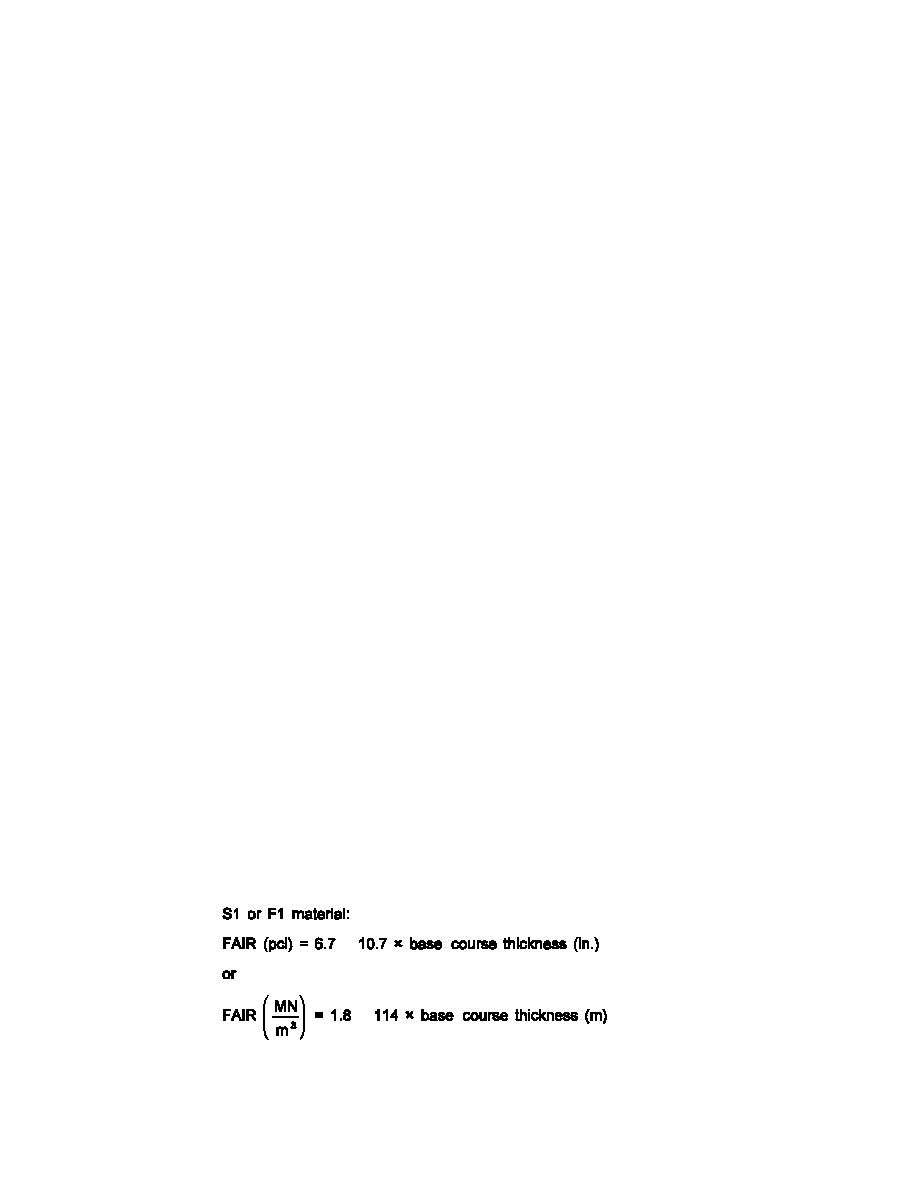
UFC 3-260-02
30 June 2001
(c) It shall not be less than that required for normal operation of snowplows and other
support vehicles.
The subgrade preparation techniques and transition details outlined in this chapter are required for
overrun pavements.
(2) Control of surface roughness in overruns. For a frost group F3 and F4 subgrade,
differential heave can generally be controlled to 75 millimeters (3 inches) in 15.2 meters (50 feet)
by providing a thickness of base and subbase equal to 60 percent of the base-course thickness
required by the limited subgrade frost penetration design method. For well drained F1 and F2
subgrade soils, the minimum thickness of pavement and base course in overruns should not be less
than 40 percent of the total thickness required for limited subgrade frost penetration design.
(3) Design of shoulder pavements. When paved shoulders are required, the paved shoulder
pavement, base, and subbase, shall have the combined thickness obtained from the flexible
pavement design curve and the appropriate FASSI value in Table 20-3. The subgrade preparation
techniques and transition details outlined in this chapter are required. If the subgrade is highly
susceptible to frost heave, local experience may indicate a need for a shoulder section that
incorporates an insulating layer or an additional granular unbound material to moderate the frost
heave. The base-course requirements set forth in this chapter must be followed.
(4) Control of differential frost heave at small structures located within shoulder
pavements. To prevent objectionable heave of small structures inserted in shoulder pavements,
such as drain inlets and bases for airfield lights, the shoulder base and subbase courses extending
at least 1.5 meters (5 feet) radially from the structures should be designed and constructed entirely
with nonfrost susceptible material to a depth to prevent subgrade freezing. Gradual transitions are
required. Alternatively, synthetic insulation could be placed below a base of the minimum
prescribed thickness to prevent the advance of freezing temperatures into the subgrade; suitable
transitions to the adjoining uninsulated pavement would be needed.
(5) Drainage. Subsurface drainage must be provided in flexible pavements in accordance
with EI 02C202/AFJMAN 32-1016.
b. Rigid Pavement Thickness Design. The thickness design procedure is identical to the
thickness design for nonfrost conditions, with the exception that instead of using the modulus of
subgrade reaction k, Frost Area Index of Reaction (FAIR) values are used. The design curves for
plain concrete and for fibrous concrete are used in connection with the reduced subgrade strength
procedure. In place of the estimated or determined subgrade k in the design curves, use the
applicable FAIR values from Figure 20-1. The FAIR values can also be estimated from the following
equations:
%
&
(20-1)
%
&
20-5



 Previous Page
Previous Page
